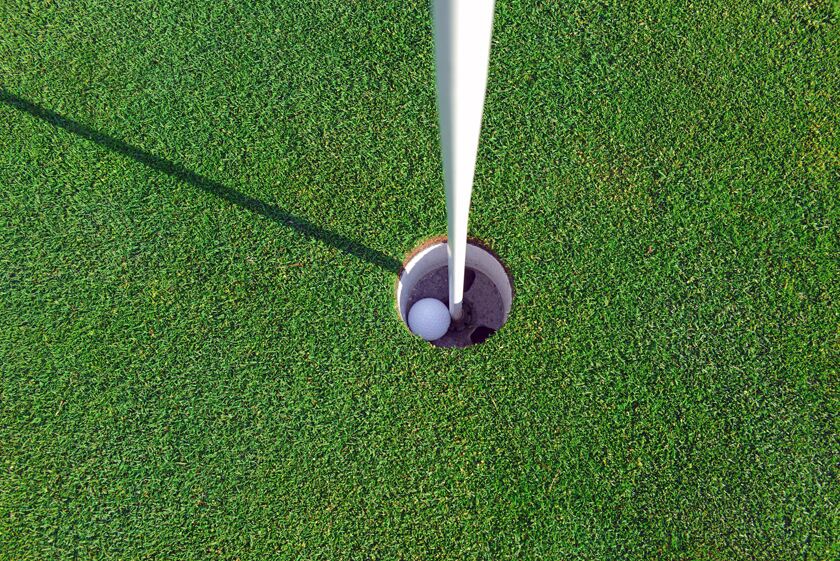The figures behind hitting a hole-in-one
It’s a golfer’s dream shot – and one few of us ever achieve in our golfing lifetimes. But by playing the numbers you could increase your odds of hitting a hole-in-one…
04 May 2017
2 minute read

|
The hole-in-one is a magical shot. Part skill, part luck it’s something that happens to you, not something to go out and achieve. But when that ball sinks into the hole after a single drive from the tee, it’s a feeling like no other. There’s a whole world surrounding the shot from buying rounds in the club house to specific insurance against someone claiming the monetary prize at a competition.
But how do you achieve one? We look at the figures from the National Hole-in-One Registry and other sources to see if we can boost your odds.
Play more
It’s a simple truth but the more you play the more likely you are to stumble across a hole-in-one.
On average, a hole-in-one is sunk every 3,500 rounds with over 128,000 perfectly struck drives hit every year. That’s a lot of golf to play. Consider that every year there are around 104 weekend days – it’d take you around 33 years of playing to reach 3,500 rounds if you played twice a weekend.
But the figures show you can get there a little faster. The average number of years a golfer has been playing when he scores a hole-in-one is 24 years. Though 60% of hole-in-ones are made by people 60 or over.
But, this doesn’t mean you can’t get one when you’re young. Tiger Woods was just 6 years old when he hit his first hole-in-one, while Michelle Wie hit 6 in her short career, starting at the age of 12.
Improve your handicap
It’s not just about getting more golf under your belt but becoming better at golf. The average handicap of someone hitting a hole-in-one is 14, with more than half (57%) made by mid-handicappers (10-19).
So, while it does help to be good, you’re more likely to score one if you’re not too good.
This could be because people with higher handicaps are more likely to play a tactical game, opting to lay-up on holes instead of going for glory from the tee.
|

|
|
Use the right equipment
Every golfer has their favourite club. Some are more at home with a wood in their hands while others prefer the finesse of a wedge. But if you’re looking to hit a hole-in-one then your best option is an iron. In fact, you’re best with a mid-iron, with 40% of hole-in-ones made with either 7, 8 or 9 irons. This is probably more to do with the length of holes than anything specific about the irons.
And it’s not just the club you need to worry about. You need to choose the right ball - 45% of hole-in-ones have been made with Titleist. Again, this could be due to the fact that they’re one of the most popular golf balls.
Look for the right holes
Finally, there are some holes where you’re more likely than others to score a hole-in-one. Look for short par 3’s – the average length of hole-in-one hole is 147 yards.
And if you’re playing in America, then head to the hotter climes of California or Texas - 18% of US hole-in-ones are made in these states.
This tactic seemed to work for Norman Manley. The Californian holds the world record for most hole-in-ones - a massive 59 in his golfing life over a 15-year period between 1964 and 1979.
Or you could head to lucky number 16 at the Augusta National. In last year’s Masters, three separate golfers scored a hole-in-one from here.
Closer to home there is the Cleobury Mortimer golf course in Kidderminster. Here, a blind golfer, 12-year-old boy and 4 others hit hole-in-ones in a two-week period, leading many to dub it the luckiest course in the country.
The ideal combination?
So, if you’re in Kidderminster, have a handicap of 14, are aged over 60 years old, have been playing for 24 years, having your irons to hand and a bag full of Titleist, then head to its 124-yard par 3 8th hole – you can’t miss.
|

